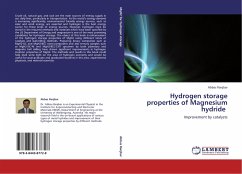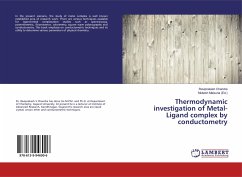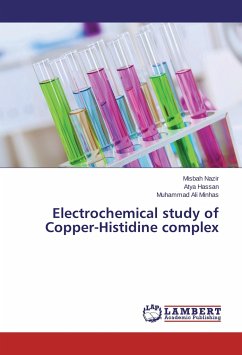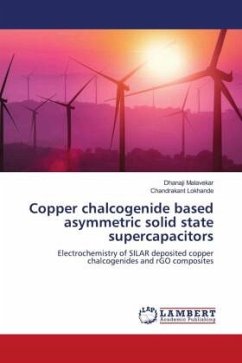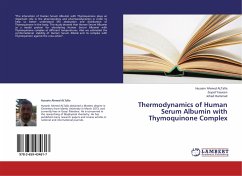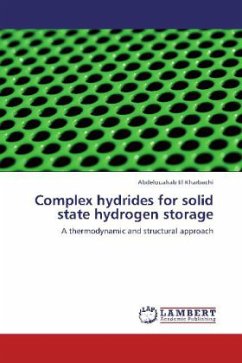
Complex hydrides for solid state hydrogen storage
A thermodynamic and structural approach
Versandkostenfrei!
Versandfertig in 6-10 Tagen
52,99 €
inkl. MwSt.

PAYBACK Punkte
26 °P sammeln!
Hydrides for solid-state hydrogen storage are one of the future solutions - pollutant free - for the storage and the transport of energy. Among the candidates, LiBH4 was selected considering its high gravimetric hydrogen capacity (up to 13.6 wt.% H2). Its decomposition can be facilitated within the presence of the hydride MgH2. Thus, the hydride system MgH2-xLiBH4 (0x3.5) reactivated by high energy ball-milling, was studied regarding its microstructural properties and stability of the phases. The desorption reaction of hydrogen, with or without additives, shows the appearance of additional pha...
Hydrides for solid-state hydrogen storage are one of the future solutions - pollutant free - for the storage and the transport of energy. Among the candidates, LiBH4 was selected considering its high gravimetric hydrogen capacity (up to 13.6 wt.% H2). Its decomposition can be facilitated within the presence of the hydride MgH2. Thus, the hydride system MgH2-xLiBH4 (0x3.5) reactivated by high energy ball-milling, was studied regarding its microstructural properties and stability of the phases. The desorption reaction of hydrogen, with or without additives, shows the appearance of additional phases accompanying the principal reaction. Heat capacity measurements of LiBH4 revealed the presence of an abnormal behaviour before the polymorphous transition attributed to the increase of crystal defects in agreement with the existence of a hypo-stoichiometric domaine observed at higher temperatures. Vapour pressure measurements of LiBH4 showed that H2 is the major component of decomposition with minor species such as B2H6 and BH3. The thermodynamic properties of LiBH4 were critically assessed, gathering the new data, in the aim of modelling of reactions occurring in hydride mixtures.




